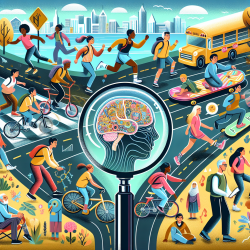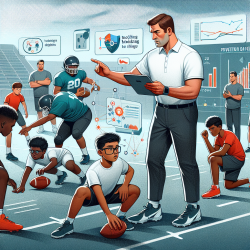Introduction
In the realm of speech-language pathology, creating effective interventions for children with cochlear implants is both an art and a science. A recent case study titled "Down the Language Rabbit Hole with Alice”: A Case Study of a Deaf Girl with a Cochlear Implant" offers valuable insights into the benefits of bimodal bilingualism in enhancing language and reading proficiency for deaf children. This blog aims to translate these findings into practical strategies for practitioners working with similar populations.
Understanding Bimodal Bilingualism
Bimodal bilingualism involves the use of both sign language and spoken language, allowing children to access language through both visual and auditory channels. The study highlights how Alice, a deaf girl with a cochlear implant, utilized code-switching and code-mixing strategies to navigate between American Sign Language (ASL) and spoken English during reading activities. This approach not only supported her language development but also enhanced her ability to retell stories effectively.
Key Findings from the Study
- Alice frequently used code-switching strategies during story retellings, which improved her speech production in both ASL and spoken English contexts.
- The use of ASL did not negatively impact her ability to retell stories in spoken English, suggesting that bimodal bilingualism can enhance language proficiency without compromising one language over the other.
- The study advocates for early exposure to sign bimodal/bilingualism to enrich cognitive, language, and literacy development in deaf children with cochlear implants.
Implications for Practitioners
Practitioners are encouraged to consider the following strategies based on the study's outcomes:
- Integrate both ASL and spoken English in therapy sessions to provide a rich linguistic environment that supports code-switching and code-mixing.
- Utilize storybook reading sessions in both languages to enhance language comprehension and retelling abilities.
- Encourage parents and caregivers to use both sign language and spoken language at home to reinforce bimodal bilingualism.
Encouraging Further Research
While this case study provides promising insights, further interdisciplinary research is needed to substantiate these findings. Collaboration among speech-language pathologists, audiologists, deaf educators, and reading specialists can lead to more comprehensive strategies that maximize the language potential of children with cochlear implants.
Conclusion
By embracing bimodal bilingualism, practitioners can unlock new pathways for language learning and cognitive development in deaf children. This approach not only supports speech production but also broadens the language-learning base, offering a more inclusive and effective intervention strategy.
To read the original research paper, please follow this link: “Down the Language Rabbit Hole with Alice”: A Case Study of a Deaf Girl with a Cochlear Implant.










